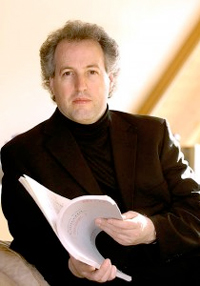by Mike Telin

From the beginning you were aware that this was not going to be another run-of-the-mill performance of an old warhorse as the opening lines in the clarinets seemingly grew out of the stage floor. As he did throughout the symphony, Honeck kept the tempos moving, avoiding any temptation to over-massage melodic phrases. At the movement’s end, the grand march faded into silence. Surprisingly, the audience respected that silence and refrained from the usual outpour of coughing and throat clearing.
The second movement was a continuation of the first as the strings rose out of the silence, perfectly introducing Richard King’s glorious horn solo that filled the hall with a singing purity of tone. The waltz movement was performed with refined beauty; Honeck avoided unnecessary tempo adjustments at the ends of phrases that are commonly heard during performances. The many excellently-played wind solos were delicately passed from player to player and section to section.
The symphony’s final movement was electrically charged as it dynamically grew to a full, well-balanced volume of epic proportions. Honeck added color and tonal punctuations by pulling out a few tricks such as asking the clarinets to play with “bells up” in places —something he did during the waltz as well — and adding two extra trumpets at the end. This was a performance that will not be easily forgotten — one that rose above being merely a string of beautiful melodies, but rather one with an over-riding, purposeful arch. The very large audience showed their appreciation by rewarding Manfred Honeck and the orchestra with an immediate ovation.
The concert began with the Cleveland premiere of Swedish composer Rolf Martinsson’s Open Mind. First performed in 2005 by Manfred Honeck and the Swedish Radio Orchestra at the Baltic Sea Festival, the work was written to serve as a short concert opener. Martinsson mysteriously notes that “A nine–tone scale forms the musical basis of the piece, but is still contrasting with form elements that are more freely treated with regard to musical material.” Honeck led a stylish performance of a well-constructed piece that served the work’s intended purpose as a concert overture. There was some fine solo trumpet and English horn playing, and the percussion section was in excellent form. The composer was on hand to receive the audience’s warm applause.
German pianist Lars Vogt, who was making his third appearance with The Cleveland Orchestra, demonstrated a commanding technique and keen musical sensibilities during his performance of Beethoven’s Piano Concerto No. 3. Although in general this was a performance that moved right along, Vogt played even the fastest passages with articulate clarity. At times muscular and at times tender, he produced many colorful mood shifts during the opening movement. The cadenza was exquisite. During the Largo Vogt played with an air of sensuality and the final Rondo: allegro had just the proper level of grandeur. Honeck and the orchestra paid close attention to the pianist, adjusting easily to Vogt’s liberties with tempos.
This was a fine conclusion to the Severance Hall season. Now, on to Blossom!
Published on ClevelandClassical.com May 28, 2013
Click here for a printable version of this article.



